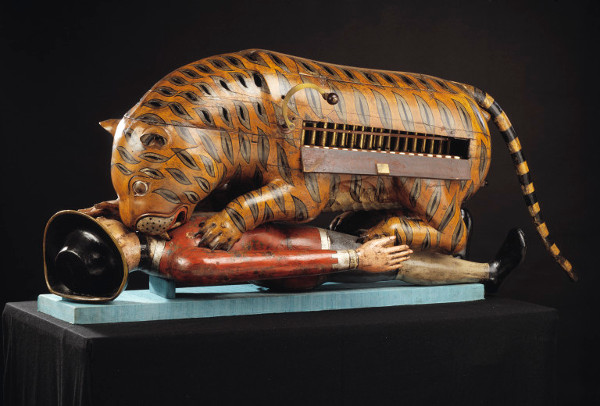
When British forces plundered the palace of Indian prince Tipu Sultan in May 1799, they found an infuriating trophy:
In a room appropriated for musical instruments was found an article which merits particular notice, as another proof of the deep hate, and extreme loathing of Tippoo Saib towards the English. This piece of mechanism represents a royal Tyger in the act of devouring a prostrate European. There are some barrels in imitation of an Organ, within the body of the Tyger. The sounds produced by the Organ are intended to resemble the cries of a person in distress intermixed with the roar of a Tyger. The machinery is so contrived that while the Organ is playing, the hand of the European is often lifted up, to express his helpless and deplorable condition.
Tipu had allied himself with France against the encroaching East India Company, and the Fourth Mysore War brought his downfall. The tiger, it appears, had symbolized his defiance of British colonialism. The instrument was removed to London, where it became a centerpiece in the Company’s Leadenhall Street gallery; John Keats saw it there and immortalized it in The Cap and Bells, his satirical verse of 1819:
Replied the Page: “that little buzzing noise,
Whate’er your palmistry may make of it,
Comes from a play-thing of the Emperor’s choice,
From a Man-Tiger-Organ, prettiest of his toys.”
“Indeed, the horrific image of a wild beast attacking a helpless fellow Briton must have stirred strong reactions in the British audience so few years after the brutal Mysore campaigns,” write Jane Kromm and Susan Benforado Bakewell in A History of Visual Culture (2010). “Contained within one wondrous work of art was an illustration of the intensity of resentment toward European imperialism, the ferocious power of the enemy prince, and the moral justification for colonization.”
